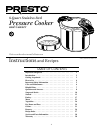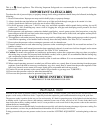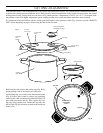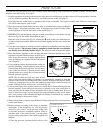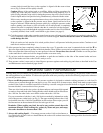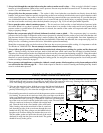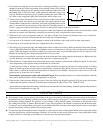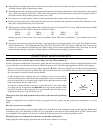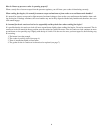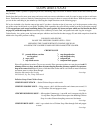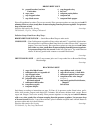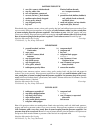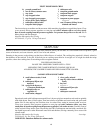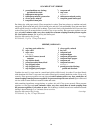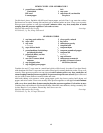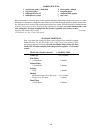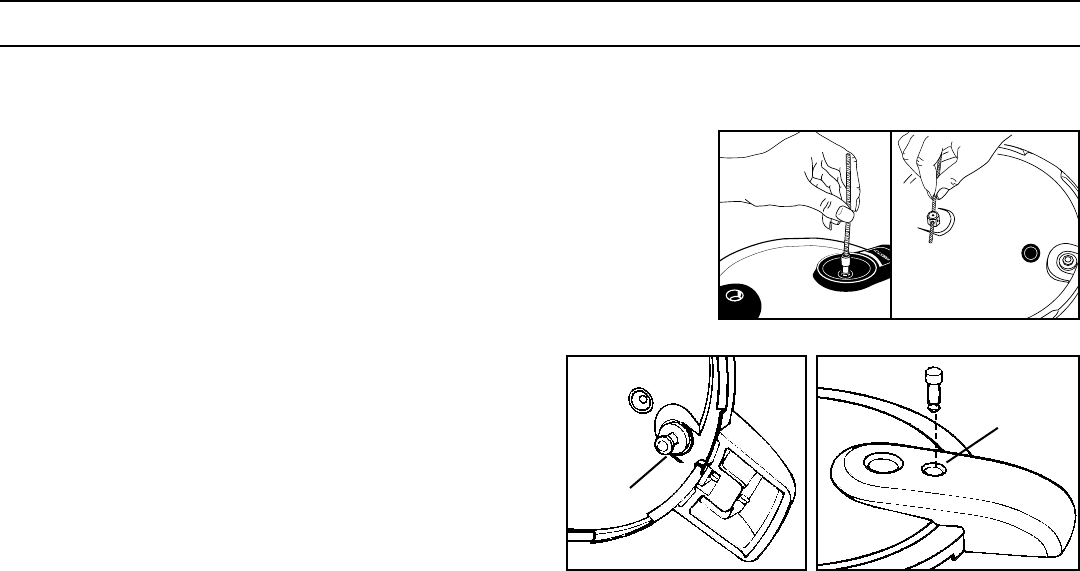
Fig. K
Fig. L
Rubber
Gasket
Cover
Handle
Hole
Fig. M
6
3. Always look through the vent pipe before using the cooker to make sure it is clear. — If the vent pipe is blocked, it cannot
function as it should and thus cannot relieve excess pressure. Pressure may then build to unsafe levels. To clean the vent pipe,
see the “Care and Maintenance” section below.
4. Always fully close the pressure cooker.
— The cooker is fully closed when the cover handles are directly above the body
handles. Your pressure cooker has specially designed lugs on the cover and body which lock the cover in place when the cooker
is fully closed. However, if the cooker is not fully closed, the lugs cannot lock the cover onto the body. It’s possible that pres-
sure could build inside the cooker and cause the cover to come off and result in bodily injury or property damage. Always be
sure the cover handles are directly above the body handles (see page 4, Fig. F). Do not turn past handle alignment.
5. Never open the cooker when it contains pressure.
— The air vent/cover lock provides a visual indication of pressure inside
the cooker. When it is up, there is pressure. When it is down, there is no pressure in the cooker and it can be opened. If the
pressure cooker is opened before all of the pressure is released, the contents of the cooker will erupt and could cause bodily
injury or property damage.
6. Replace the overpressure plug if it is hard, deformed, cracked, worn or pitted.
— The overpressure plug is a secondary
pressure relief valve which is designed to relieve excess pressure by releasing from the cooker cover in the event that the vent
pipe becomes blocked. The overpressure plug is made of rubber, and when new, is soft and pliable. Over time, depending on
the frequency and type of use, rubber becomes hard and inflexible. When hard and inflexible, the overpressure plug loses its
ability to act as a secondary pressure relief valve. It should be replaced immediately.
Should the overpressure plug ever be forced out of the cover due to excess pressure while cooking, it is important to call the
Test Kitchen at 1-800-368-2194. Do not attempt to use the released overpressure plug.
7.
Always follow special procedures found in the instruction book when pressure cooking rice, grains, and dry beans and
peas.
— During cooking, dry beans and peas tend to froth and foam which could cause the vent pipe to become blocked.
Therefore, dry beans and peas need to be soaked and cooked according to instructions beginning on page 29. Using this method
will keep foam at safe levels during cooking. Like dry beans and peas, rice and grains tend to froth and foam during cooking;
therefore, to contain foaming and frothing during the cooking period, rice and grains must be prepared in a bowl in the pressure
cooker according to directions on page 31.
8.
Never pressure cook applesauce, cranberries, rhubarb, cereals, pastas, dried soup mixes, or dry beans and peas which
are not listed in the chart on page 29.
— These foods expand so much as a result of foaming and frothing that they should
never be cooked under pressure.
Care and maInTenanCe
1. All parts of your pressure cooker, including the sealing ring and pressure regulator, are fully immersible for easy cleaning.
When washing the unit, however, the sealing ring should always be removed to allow easy cleaning of the inside rim of the
cover. The sealing ring should be washed with hot, sudsy water after each use.
2. To be sure the vent pipe is clear, hold the cover up to the light and look through
the vent pipe. Clean it with a small brush or pipe cleaner if it is blocked or
partially blocked (Fig. K). Also clean the vent pipe nut as shown.
3. Occasionally remove the air vent/cover lock in the pressure cooker cover handle
for cleaning. To remove the air vent/cover lock, place your finger over the hole
in the cover handle and remove the rubber gasket from the air vent/cover lock
on the underside of the cover (Fig. L). Push the air vent/cover lock through the
top of the cover and wash it and the gasket in hot sudsy water. The metal shaft
of the air vent/cover lock may be cleaned with a nylon mesh
pad. Clean the hole in the cover handle with a small brush.
After cleaning, reinsert the metal shaft of the air vent/cover
lock from the top side of the cover down through the cover
handle hole (Fig. M). Place a finger over the handle hole (to
keep the cover lock from falling out) and turn the cover over.
Wet the rubber gasket and push onto the end of the metal
shaft until it snaps into the groove on the shaft. The gasket
should fit loosely in the groove.



